2021 Porsche Taycan RWD Review: Base is Just as Sweet

FAST FACTS
| Motor: | Permanent-magnet synchronous motor |
| Output: | 375 hp, 250 lb-ft (469 hp, 264 lb-ft with launch control) |
| Transmission: | 2AT, RWD |
| US fuel economy (MPGe): | N/A |
| CAN fuel economy (L/100KM): | N/A |
| Starting Price (USD): | $81,250 (inc. dest.) |
| As-Tested Price (USD): | $115,680 (inc. dest.) |
| Starting Price (CAD): | N/A (see text) |
| As-Tested Price (CAD): | N/A (see text) |
“It’ll be a pink Porsche.” Even I knew that sounded suspect.
It was the most 2021 of things: phoning in a food order for curbside pickup. Sensing the hesitation from the other end, I reassured them that yes, I was serious. This was not a crank call, and they would not be out food.
Get a Quote on a New Porsche TaycanThe car in question is the 2021 Porsche Taycan, now shorn of any trim designations and rocking sweet Frozenberry Metallic paint. It’s the new entry point of the Taycan lineup, with less power, fewer driven wheels and, starting at $81,250 including destination, a substantially lower price point. Will buyers feel-short changed opting for this latest Taycan, or has Porsche retained the magic in its first modern EV?
What’s new?
To drop the Taycan below the $100,000 line, Porsche has pulled out the second electric motor normally found in the nose. This means this is the only rear-drive Taycan available, with a single electric motor doing duty out back. The Taycan still uses the novel two-speed transmission setup, and comes with two different battery sizes. Standard-fit is the 79.2-kWh pack, the same one found in the Taycan 4S. So equipped, Porsche quotes 321 horsepower and 250 lb-ft of torque. Check the Sport Chrono pack option and those numbers surge to 402 hp and 254 lb-ft during launch control.
SEE ALSO: BMW M5 Competition vs Porsche Panamera GTS ComparisonAlso like the 4S, the base Taycan has the option to upgrade to a larger 93.4-kWh Performance Battery Plus. For $5,780, the PBP bumps standard power to 375 horsepower, with torque staying level at 250 lb-ft. Launch control pushes those numbers up to 469 hp and 263 lb-ft.
No matter which battery pack is equipped, Porsche quotes the same 5.1-second run to 60 mph (96 km/h). The EPA still hasn’t released range estimates, but the PBP-equipped rear-drive model should be the new leader in the Taycan range. I picked the car up on Friday with an indicated 10,399 km on the odometer, and 94-percent battery charge. Tuesday morning it showed 10,740 km with 17-percent charge remaining. Some rough math suggests a theoretical 275-mile range (443 km), and that’s without any attempt to extend the range. A 300-mile car this very well could be.
For the Taycan’s sophomore year, Porsche has added a bunch of new exterior and interior color options, including this Frozenberry Metallic look. It works incredibly well to these eyes, especially paired with the Blackberry and Slate Grey interior treatment ($4,700). Even with those unfortunate, almost hubcap-style base 19-inch wheels, the Berrymobile was the center of attention everywhere it whirred.
So is it still good to drive?
I’m happy to report that while this Taycan may be down a motor and a driven axle, the essential goodness of the platform remains.
Straight-line performance is, as the 0–60 mph time suggests, merely quick instead of swear-generating. But there’s no change to the steering; it’s as direct and feelsome as the last Taycan I was in. Weight is down by a little over 200 pounds without the second electric motor, so if anything, turn-in might even be fractionally quicker than the 4S. The overwhelming sensation from behind the wheel is one of sure-footedness. Even if the Taycan only has two contact patches to transmit power to, they’re thick, 275-series cuts of rubber. You’d need to be really trying to cause trouble to unstick this thing on public roads.
Porsche equipped this tester with another key handling helper as well: rear-axle steering. At low speeds, the rear wheels turn in the opposite direction of the fronts, improving agility. It’s like chopping a foot or two out of the wheelbase, giving the Taycan quicker reflexes than its length would suggest. On highways the rear wheels turn in the same direction for added stability.
SEE ALSO: Genesis G80 vs BMW 5 Series ComparisonThe optional electric sport sound remains a cool, Jetsons-style accompanying soundtrack to driving. If I have a complaint, it’s that the regenerative braking never offers enough deceleration. I’m not quite a one-pedal driving fan yet, but those that are won’t find it here. On the flip side, the brake pedal itself is easy to modulate, lacking the initial grabbiness some EVs have.
Sit back and relax
The Taycan impresses when you aren’t pushing it, too. The ride is excellent around town, no doubt improved with the optional adaptive air suspension fitted here. Raising the car is an easy tap of the touchscreen, and the Taycan will even offer to remember the coordinates where it was lifted, so it will do it automatically in the future. Smart.
The driving position is typical Porsche excellence, with clear sight lines out over the curved fenders ahead. The rear window is a slit, though. Rear-seat legroom is adult-friendly thanks to little indents in the floor, which Porsche calls “foot garages.” Headroom is merely okay: this base model lacks the optional glass roof, so while there’s physically more room, it doesn’t feel as spacious in the back. Rear passengers get their own small climate control screen with individual controls, too.
With no less than four screens on the dashboard, it’s good the Taycan runs Porsche’s latest infotainment system. Flicking through information on the curved instrument panel is easy, and while a touchscreen will never be as intuitive as physical climate controls, the dedicated panel with haptic feedback comes close. The main screen did show some lag though, typically shortly after the Taycan was turned on. Speaking of, I’m thankful Porsche still believes in a proper on/off switch for EVs. That said, the shifter positioning remains odd, obscured by the (great-feeling) steering wheel.
To get all the latest driver and safety assists requires jumping into the options list. Porsche offers a 360-degree camera, and it’s a good investment if you regularly handle tight parking spots. That’s because the standard back-up camera lacks the resolution of examples from BMW or Audi, and its fisheye distortion can make it hard to judge.
Every Taycan comes with three years’ worth of free 30-minute charging sessions from Electrify America/Canada. I used one of the company’s 350-kW chargers with the Taycan. The first attempt cancelled as soon as it started, but the second began without issue. In 13 minutes I added a full 50-percent to the battery charge, at a cost of $7.41 CAD. Not bad at all.
Best equipment costs extra
Of course, this being Porsche, plenty of goodies are available on an options list as long as the autobahn. What starts as an $80k car saw nearly 50 percent of that amount added back on in options. This tester rings in at $115,680, though it seems the $6,040 SportDesign exterior package listed isn’t equipped, so let’s call it $109,640. Some of that, like the 93.4-kWh battery ($5,780), Sport Chrono Package ($1,320) and rear-axle steering ($1,620) makes the Taycan so good. This particular color scheme ain’t cheap either, ringing in at $800 for the exterior, $4,700 for the interior leather scheme, and an additional $660 for matching Blackberry seatbelts. C’mon though—live a little.
It’s a little surprising goodies like power folding mirrors ($330), lane change assist ($950) and adaptive cruise control (a whopping $2,050) aren’t standard. Same goes for the electric sport sound ($500). I’m sure the appeal is being able to tailor the car to your exact needs. I’d highly recommend the head-up display ($1,850) however, and Porsche Intelligent Range Manager ($300) minimizes any range anxiety you might have. As I said in our Taycan versus Model S comparison earlier this year, I’d personally skip the passenger display ($1,130).
SEE ALSO: Porsche Taycan vs Tesla Model S ComparisonCanadian readers will no doubt notice a distinct lack of CAD values throughout this review. That’s because the Taycan isn’t available in the land of Timbits. A Porsche spokesperson readily acknowledged that Canada is a much more AWD-focused market than the US, so we wouldn’t hold our breath. Instead, the Taycan entry point in Canada is the very rad Taycan 4 Cross Turismo, at $121,400 CAD.
Verdict: 2021 Porsche Taycan RWD Review
Equipment foibles aside, the 2021 Porsche Taycan is a worthy point of entry into Porsche’s EV lineup. It’s just as good to drive as the AWD models, and still plenty quick when measured against anything other than the big T. The Model S might be quicker, but the Taycan understates rather than overstates its range, and, well, look at it. Even if it rarely leaves a dealership for under six figures, this latest member of the Taycan family broadens the four-door’s appeal, and that’s pretty sweet news for everyone.
Become an AutoGuide insider. Get the latest from the automotive world first by subscribing to our newsletter here.
LOVE IT
- Berry good looks (sorry)
- Engaging drive, calm cruiser
- Easily outdoes range estimates
LEAVE IT
- Tight rear seats
- Still needs pricey options
- Infotainment can be laggy

Kyle began his automotive obsession before he even started school, courtesy of a remote control Porsche and various LEGO sets. He later studied advertising and graphic design at Humber College, which led him to writing about cars (both real and digital). He is now a proud member of the Automobile Journalists Association of Canada (AJAC), where he was the Journalist of the Year runner-up for 2021.
More by Kyle Patrick



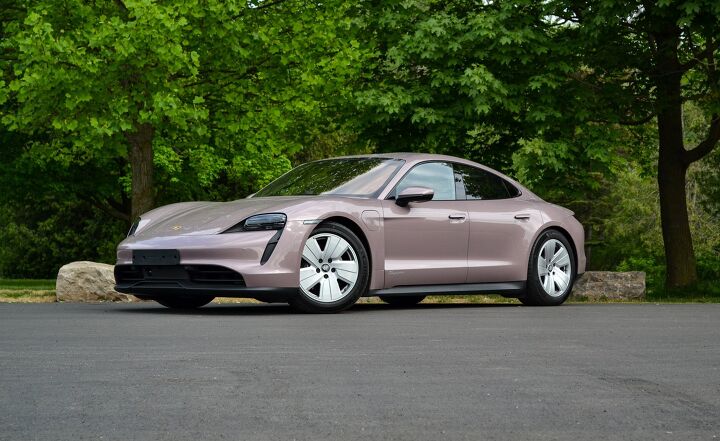























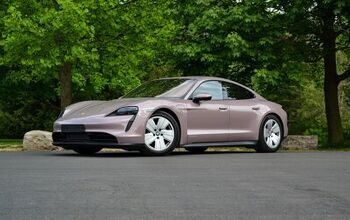
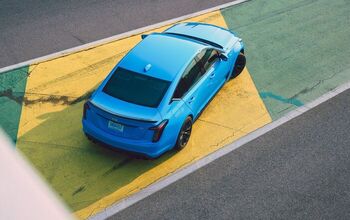


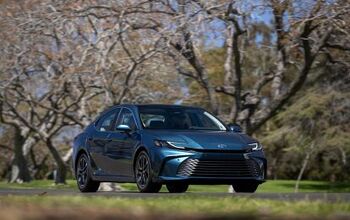
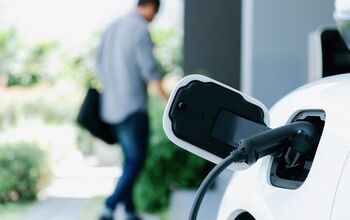
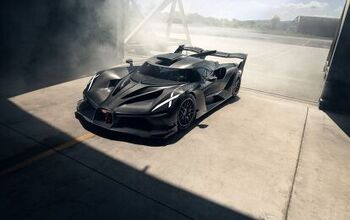

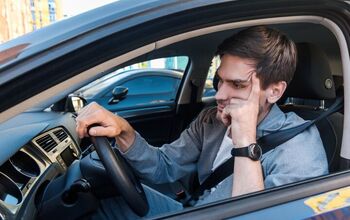
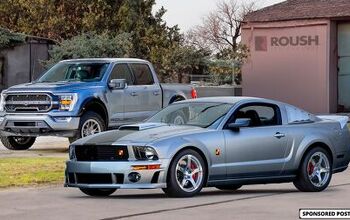
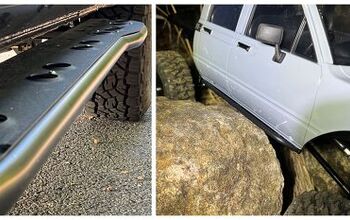

Comments
Join the conversation